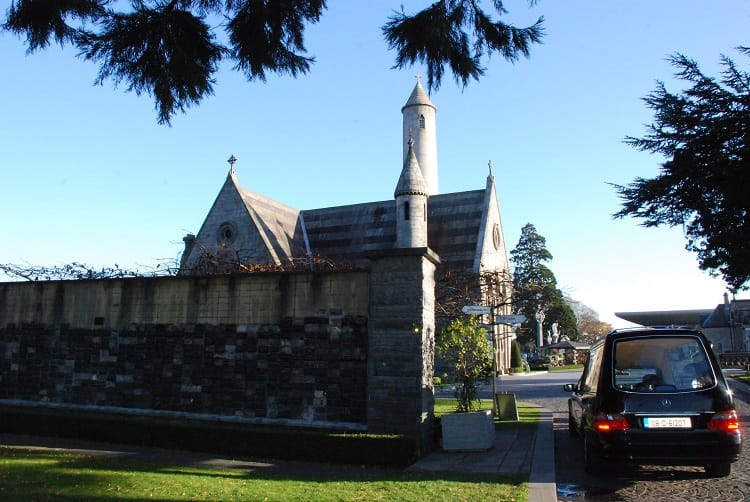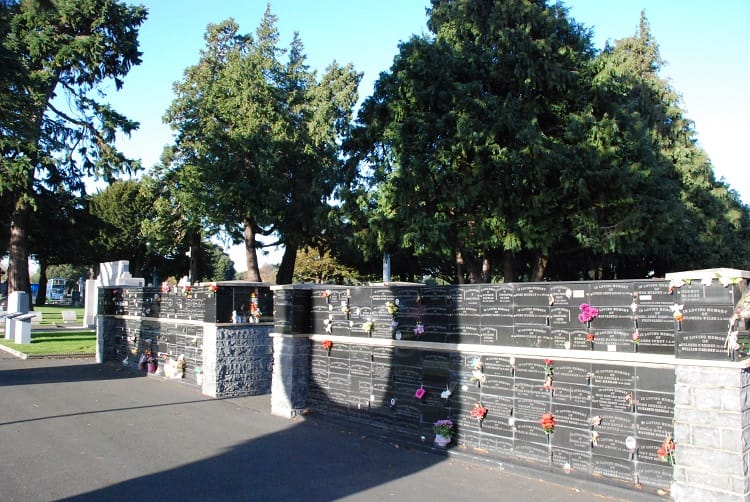What’s the best way to tell area residents about plans for a new asylum shelter nearby?
The government should tell communities directly about plans for new asylum shelters, some activists and politicians say.
Some of Dublin’s graveyards are filling up and one Dublin City Councillor thinks he knows how to solve the problem.

The Reverend John Marchant of Irishtown is short on graves.
When one of his parishioners dies, they’re often buried miles away in either Deansgrange or Shanganagh cemeteries, he says.
“One of the things that a lot of people who are in that age group, looking to the near future, would say is, ‘I’ve lived in Irishtown or Sandymount or Ringsend all my life. I don’t want to have to go out to County Wicklow,’” he says. “Or that, ‘My loved ones will have to go to County Wicklow to visit my grave.’”
The tiny graveyard next to St Matthew’s Church in Irishtown has long since filled up with what were corpses.
Cremation is on the increase, but now Marchant and his parishioners face the challenge of where to store the ashes, he says.
Labour Councillor Dermot Lacey thinks he has a solution, and that Dublin City Council should take the lead.

It’s simple, says Lacey: the city council should construct columbarium walls in some of its older graveyards on the north and south sides of the city. He mentioned a small Dublin City Council graveyard in Donnybrook, for example.
Columbaria – blocks or walls with niches and cubbyholes to store urns and cremated remains – are in widespread use throughout Europe, yet few cemeteries in Dublin have them.
Lacey says they should be built to accommodate those around Dublin who want their remains to stay nearer home.
“I don’t mean to be corny, but I had a statement once saying ‘New life for old graveyards,’” he says. “I think we could open up some of these old graveyards for which there is no income at the moment and we could allow people to be buried in their home place.”
Lacey first floated the idea years ago, but the money simply wasn’t there at that time. Now, he says, the council might be more willing to pilot such a project.
As he sees it, it’s a no-brainer: it’s environmentally sustainable, it’s not using up too much land, and it means people can visit deceased relatives without going too far.
Rev Marchant buried the ashes of some of his parishioners in the now-full graveyard, but it’s not a long-term solution, he says.
“The alternative is to start building up these walls. We have run out of space after 300 years and I don’t want to have to send the remains of people to the nether regions of Dublin,” he says. “If they want to be buried in the locality in which they lived I think it’s the least we can offer.”
Rev Marchant says he already has two high, featureless walls ready to go.
Some of Dublin’s cemeteries – such as Glasnevin, Mount Jerome, and Newlands – already have columbaria.
Cremation in Dublin is a far cheaper option for many these days. Mount Jerome charges €4,300 for a new burial plot for two people, whereas a space in their columbarium wall for two costs only €1,100.
Glasnevin Cemetery charges between €2,100 and €8,000 for graves accommodating up to four people, whereas each space in their columbarium wall costs €800.
According to Mount Jerome Cemetery Director Frank McGarry, cremation is increasingly used in Dublin as an alternative to burials.
Currently, however, only 2 to 3 percent of

cremated remains are interred in Mount Jerome’s columbarium walls. That’s because “most families have use of an existing family grave in which to inter ashes”, said McGarry, by email.
Not everyone will have that option in the future.
Alternatives are needed, says Colin McAteer of Green Coffins Ireland. “There will be pockets of land that are available for burial no matter where you go,” says McAteer. “But cremations are on the increase and cost is a big issue. In the likes of Dublin, where the graves are so incredibly expensive, that option is more appealing.”
McAteer says that, in his line of work, he encounters relatives “all the time” who want their loved ones buried closer to home. Columbarium walls are one solution to that, he says. McAteer estimates that over 75 percent of existing graveyards in Ireland will be full in about 10 years.
Thirty-two percent of all funerals in Dublin are now cremations, according to funeral director David Fanagan. “That figure will go up or start tipping over the next 25 years up to 50, 60 percent,” he says. “[Columbarium walls] would be another option for a family and would help reduce the cost of a funeral.”
The council currently maintains seven cemeteries in Dublin and Labour’s Lacey says he’s persuaded the council management to move the idea forward.
“I was sort of pushing them and then they initiated a report at the meeting of the last Arts SPC [Strategic Policy Committee],” he says. “There’ll be a fuller report to the next meeting. It got pretty general agreement.”
Reverend Leslie Robinson works out of St John the Baptist Church on Seafield Road in Clontarf.
Like Reverend Marchant’s over in Irishtown, Robinson’s parish graveyard from 1866 is now full up, with the exception of some remaining family plots. A solution was needed.
When, in the early 2000s, one parishioner, a man named Tommy Mahon, wanted his late wife Helen buried near the community and her church, he had an idea.
Mahon and others grouped together, and in 2005 a columbarium wall was constructed within the church. Mahon passed away before the wall’s completion, but was later placed alongside his wife within it.
It made sense, says Robinson. “They did a poll of the parishioners and got the go-ahead,” she says. “For the families it’s so important that their relatives are accessible and keeping the strong ties with the parish and the community I think is very important.”
It’s early days for Lacey’s proposal, but figuring out the costs will no doubt be an issue for Dublin City Council.
Archie Davidson, who runs the Belfast-based company Columbarium Stone, says that units for interring ashes are essentially self-financing. They can be pre-sold, and that money can then cover the cost of construction.
“They’re something that’s fairly recent in Ireland,” he says. “In Northern Ireland, up until now they’ve been built more or less for some memorial gardens where remains are scattered and everybody’s mixed up together.”
Depending on the material, Davidson says columbarium walls for 30 to 40 people can cost between €4,000 and €5,000. That’s for granite. Concrete is cheaper.
Labour’s Lacey says he’s hopeful Dublin’s dead will soon be accommodated better than they currently are.
“I’m prepared to sit down with anybody to advance what I think is a good idea,” he says. “If there are negatives in it, then let’s discuss the negatives. There are all kind of possibilities.”
Get our latest headlines in one of them, and recommendations for things to do in Dublin in the other.